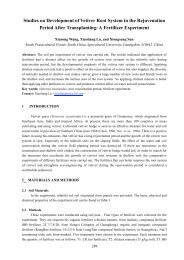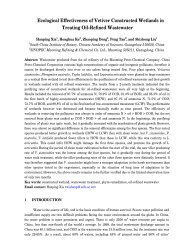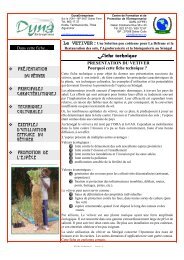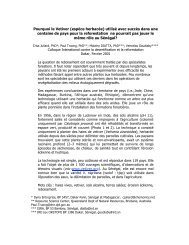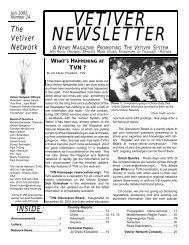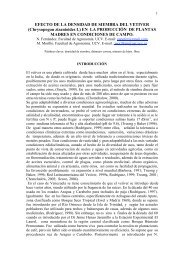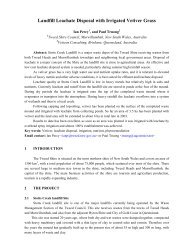Training manual - The Vetiver Network International
Training manual - The Vetiver Network International
Training manual - The Vetiver Network International
You also want an ePaper? Increase the reach of your titles
YUMPU automatically turns print PDFs into web optimized ePapers that Google loves.
formed, thus preventing the grass from being totally destroyed. <strong>The</strong> grass is therefore capable of<br />
producing new leaves rapidly afterwards.<br />
<strong>The</strong> leaf of V. nemoralis is 35-60 (maximum 80) cm long and 0.4-0.6 (maximum0.8) cm wide,<br />
and is pale green. <strong>The</strong> upper surface of the blade flaps with a triangular ridge. <strong>The</strong> texture is coarse<br />
and a little waxy. <strong>The</strong> lower surface has the same color as the upper surface but somewhat paler.<br />
When holding the leaf against the sunlight, the septum is not distinctly seen. However, the midrib<br />
that is hardened and ridge-like structure can be clearly seen.<br />
At the same age, the roots of V. nemoralis are shorter than those of V. zizanioides. Generally,<br />
the roots of a one-year-old vetiver plant can be as long as 80-100 cm.<br />
<strong>The</strong> inflorescence of local V. nemoralis appears in many different colors depending on the<br />
specific ecotype. In Uthai Thani and Nakhon Phanom, the color ranges from beige to reddish purple<br />
(Nanakorn and Chinapan 2000).<br />
17





